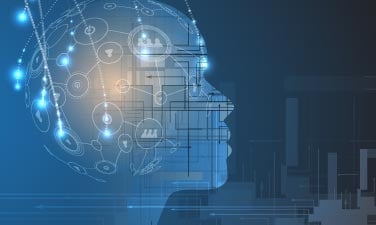Causal AI: Understanding Cause-and-Effect in Machine Learning
Traditional machine learning models are excellent at identifying correlations but often fail to distinguish between causation and correlation. This limitation affects decision-making in critical areas such as healthcare, finance, and policy development. Causal AI, an emerging field in artificial intelligence, aims to bridge this gap by integrating causality into machine learning models, allowing them to reason about cause-and-effect relationships rather than just statistical patterns.
In this blog, we will explore the fundamentals of causal AI, its importance, techniques, applications, and future directions.
Why Causal AI Matters
The ability to understand and model causality is crucial for AI systems to make reliable and robust decisions. Some key reasons why causal AI is important include:
Better Decision-Making: Unlike correlation-based AI, causal AI helps predict the effects of interventions rather than just observing associations.
Generalizability: Causal models are more adaptable to new environments and can make accurate predictions even when the data distribution changes.
Fairness and Bias Mitigation: Causal AI helps identify and correct biases in machine learning models by understanding the root causes of disparities.
Improved Interpretability: By modeling cause-and-effect relationships, AI decisions become more transparent and explainable.
Key Concepts in Causal AI
Causal AI relies on foundational concepts from causality research, which include:
Causal Graphs
Causal relationships are often represented using Directed Acyclic Graphs (DAGs). These graphs visually depict dependencies between variables and help distinguish between direct and indirect effects.
Interventions
An intervention involves changing a variable in a causal model to observe its effect on the outcome. This process is crucial for making policy decisions and recommendations.
Counterfactual Reasoning
Counterfactual analysis asks "what if" questions—what would have happened if a specific event had been different? This approach is widely used in fairness assessments and impact analysis.
Confounders and Bias
Confounders are variables that affect both the cause and the effect, potentially leading to spurious correlations. Identifying and adjusting for confounders is critical for causal inference.
Techniques in Causal AI
There are several approaches to implementing causal AI, including:
Causal Discovery
Causal discovery algorithms analyze observational data to infer causal structures. These methods include:
Constraint-based methods: Identify causal relationships based on statistical dependencies.
Score-based methods: Use optimization techniques to find the best-fitting causal graph.
Functional causal models: Assume specific mathematical functions for causal mechanisms.
Causal Inference
Causal inference techniques estimate the effect of an intervention using methods such as:
Propensity Score Matching: Matching similar individuals from different groups to estimate causal effects.
Instrumental Variables: Using external variables that influence the cause but not the outcome directly to estimate causal relationships.
Difference-in-Differences: Comparing changes over time between treatment and control groups to measure the causal effect.
Causal Reinforcement Learning
Causal reinforcement learning integrates causal reasoning into reinforcement learning models, enabling AI systems to make better sequential decisions based on cause-and-effect relationships.
Applications of Causal AI
Causal AI is transforming various industries by enabling more informed and reliable decision-making. Some key applications include:
Healthcare
Identifying the true causes of diseases rather than just risk factors.
Evaluating the effectiveness of treatments and medical interventions.
Reducing biases in AI-driven diagnostics and recommendations.
Finance
Improving credit risk assessment by distinguishing between correlation and causation.
Detecting fraudulent transactions by analyzing causal patterns.
Enhancing investment strategies by understanding causal drivers of market movements.
Marketing and Business Strategy
Understanding the causal impact of advertising campaigns on sales.
Optimizing pricing strategies by analyzing consumer behavior causally.
Identifying factors that truly influence customer retention.
Social Sciences and Policy-Making
Evaluating the impact of policy interventions on economic and social outcomes.
Measuring the effectiveness of education programs.
Reducing bias in hiring and workplace decisions.
Challenges in Causal AI
Despite its potential, causal AI faces several challenges:
Data Limitations: Many datasets lack explicit causal structures, making causal discovery difficult.
Computational Complexity: Inferring causal relationships requires significant computational resources.
Ethical and Interpretability Concerns: Understanding causality in complex systems requires careful interpretation to avoid incorrect conclusions.
Integration with Traditional Machine Learning: Many existing AI models are designed for correlation-based learning, requiring new frameworks to incorporate causality.
Future Directions in Causal AI
Causal AI is rapidly evolving, with ongoing research in:
Hybrid Models: Combining causal inference with deep learning to improve explainability and robustness.
Automated Causal Discovery: Developing algorithms that can learn causal structures from large datasets with minimal human intervention.
Causal AI for Autonomous Systems: Improving decision-making in robotics, self-driving cars, and AI assistants through causal reasoning.
Regulatory and Ethical Standards: Establishing guidelines to ensure responsible use of causal AI in sensitive applications.
Kindle : Causal AI
Hard Copy : Causal AI
Conclusion
Causal AI represents the next frontier in artificial intelligence, enabling machines to move beyond correlation-based reasoning and understand true cause-and-effect relationships. By integrating causal inference techniques, AI systems can become more reliable, fair, and interpretable, ultimately leading to better decision-making across industries.
As causal AI continues to develop, its adoption will play a crucial role in building more trustworthy and effective AI applications. Organizations that embrace causal AI today will gain a competitive advantage by making more informed, evidence-based decisions.






















.jpg)






.png)




















0 Comments:
Post a Comment